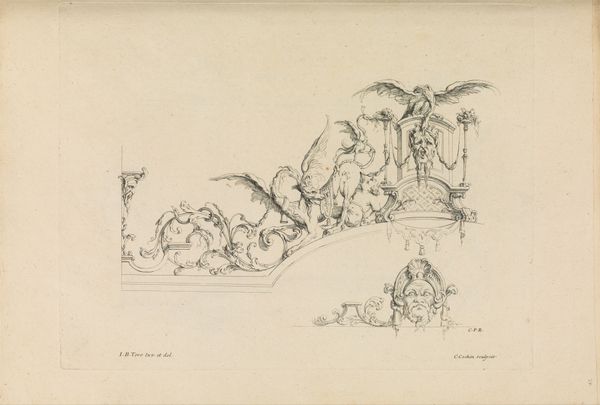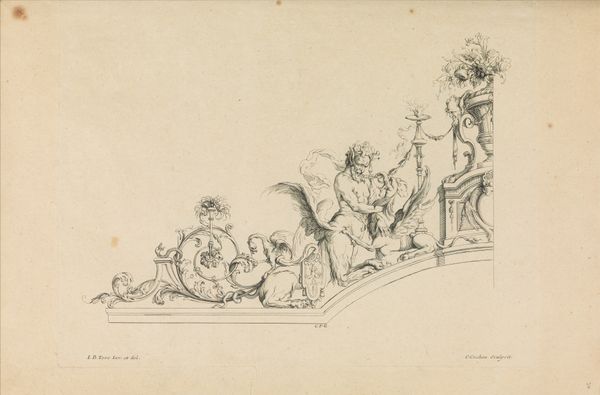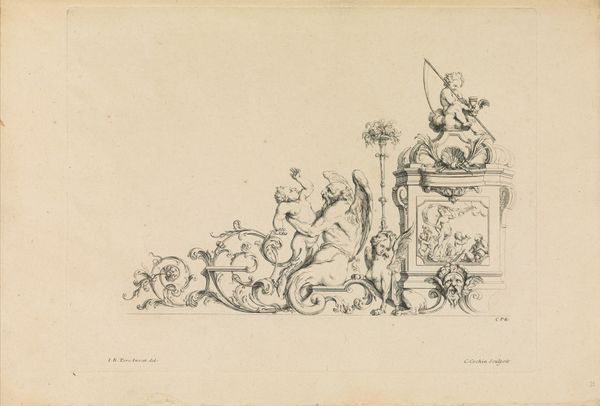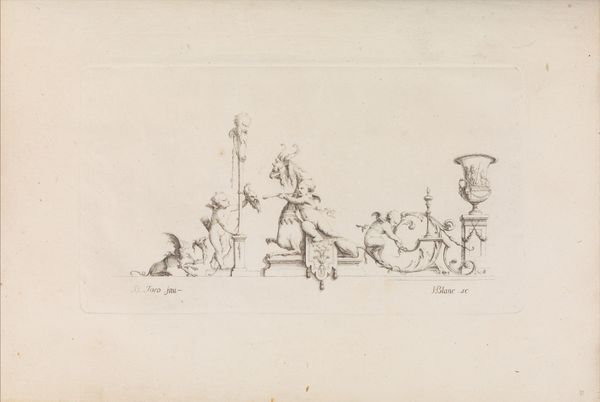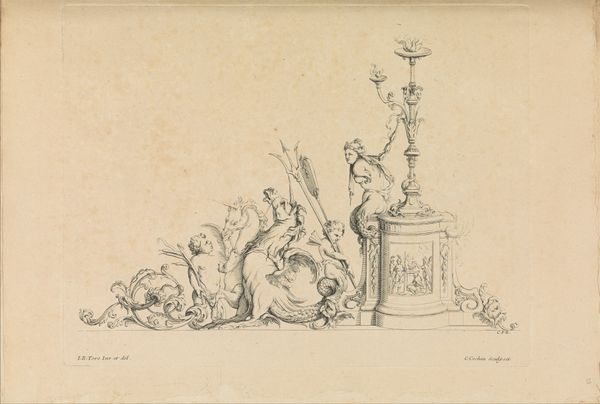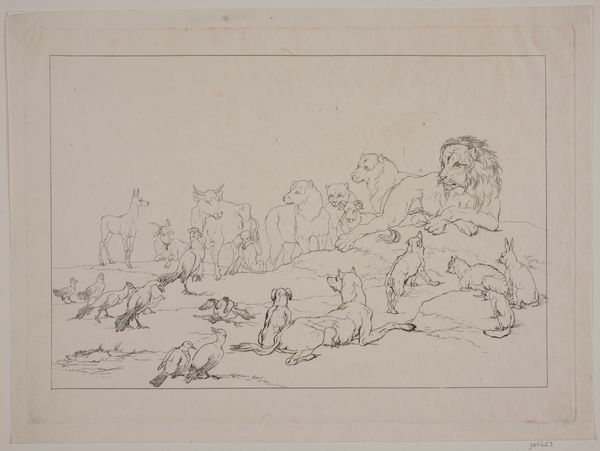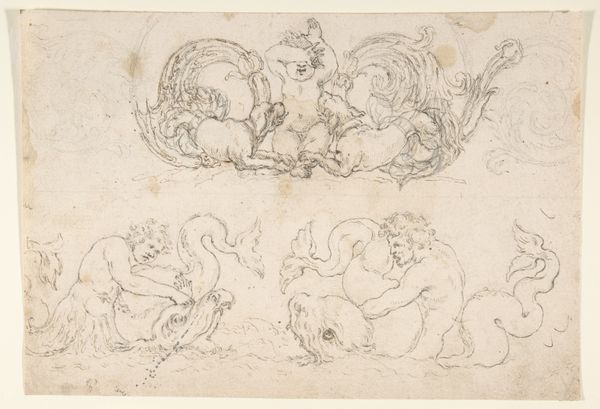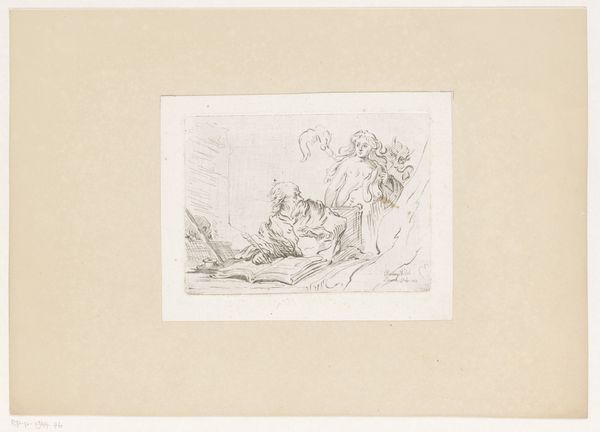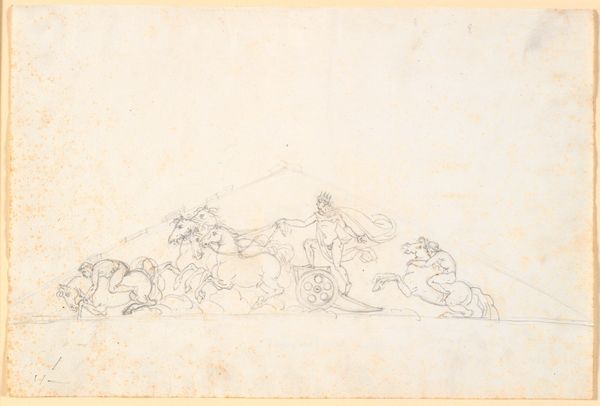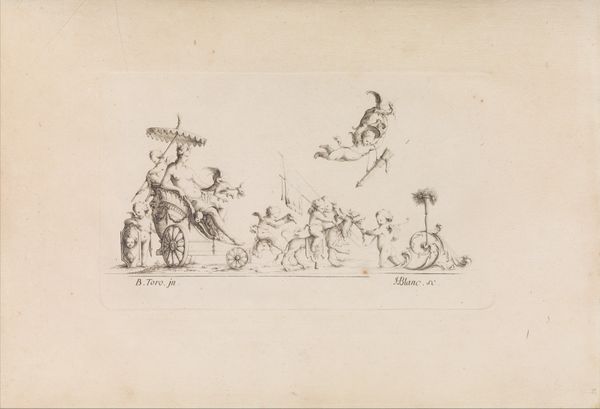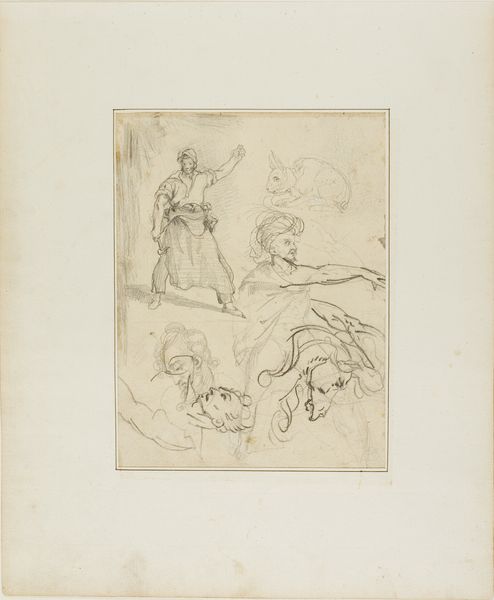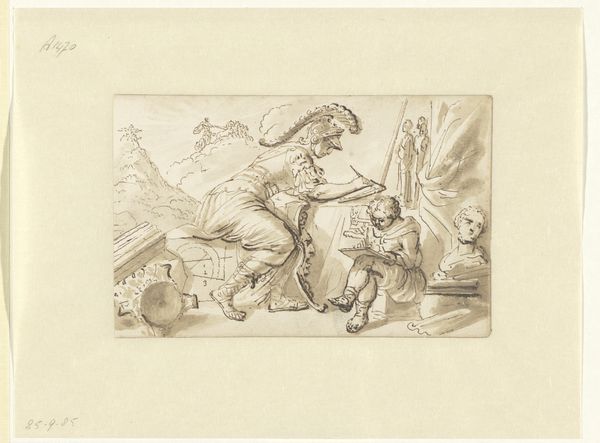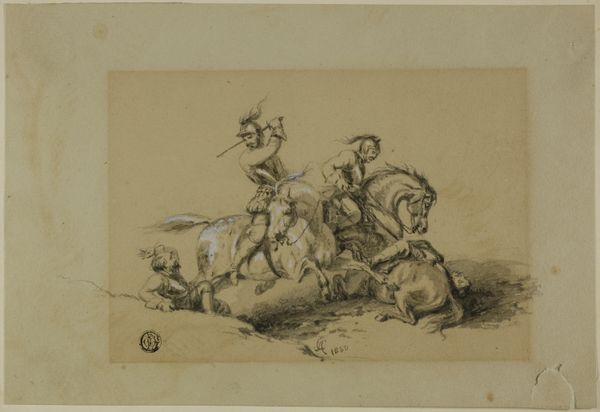
Desseins Arabesques a Plusieurs Usages Inventés par J.B. Toro 1716
0:00
0:00
drawing, print
#
drawing
#
allegory
#
baroque
# print
#
figuration
#
decorative-art
Dimensions: Plate: 9 9/16 × 12 3/8 in. (24.3 × 31.5 cm) Sheet: 15 3/4 × 11 7/16 in. (40 × 29 cm) [irregular edges]
Copyright: Public Domain
Editor: This drawing, “Desseins Arabesques a Plusieurs Usages Inventés par J.B. Toro,” dates to 1716. Created by Jean Bernard Toro, it appears to be an elaborate design for, well, something decorative! The line work is so delicate and precise. What do you see in this piece, given the historical context? Curator: Well, immediately, it screams the Baroque period, doesn't it? Consider where this would be displayed. These designs served as templates, really, for luxurious decorations commissioned by wealthy patrons and, often, deployed in very public spaces. The aristocracy really wanted to be _seen_. How do the allegorical figures and the decorative arabesques serve that goal, do you think? Editor: I suppose these designs, filled with classical figures and elaborate flourishes, communicated a certain… status, right? That these people had taste, wealth, and understood classical allegory? Curator: Precisely. This wasn’t just decoration; it was a visual language of power. And note the term “arabesques.” It nods to a fascination with other cultures, reframed within a European aristocratic context. There's a whole history of orientalism wrapped up in that stylistic choice. What would the impact be on the people beholding the finished work, installed in a palace or public building? Editor: So, it's about signaling sophistication and dominion to the public. This wasn't merely about beauty, it was about solidifying a social hierarchy. I hadn’t considered how intentional that must have been. Curator: Exactly. And it is a potent reminder that what we might perceive as simple aesthetics are so deeply tied to historical social structures. Think about what kind of image that engraver tried to propagate, of an intellectual authority. Editor: I see. I'll definitely think differently about these Baroque pieces from now on! Curator: And that’s the aim: to keep interrogating our assumptions about what art is and what it does.
Comments
No comments
Be the first to comment and join the conversation on the ultimate creative platform.
